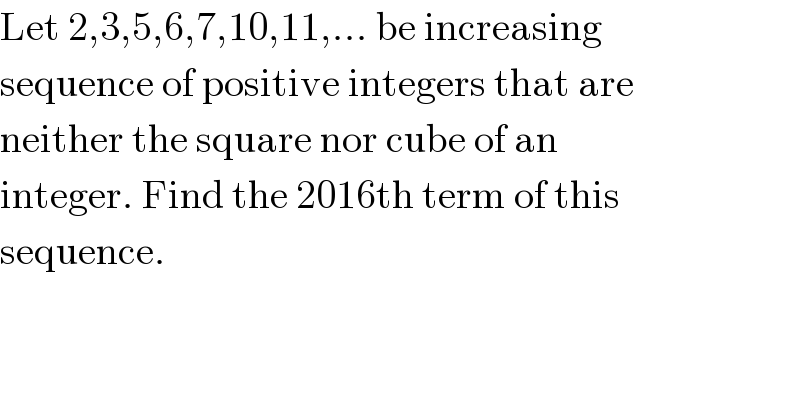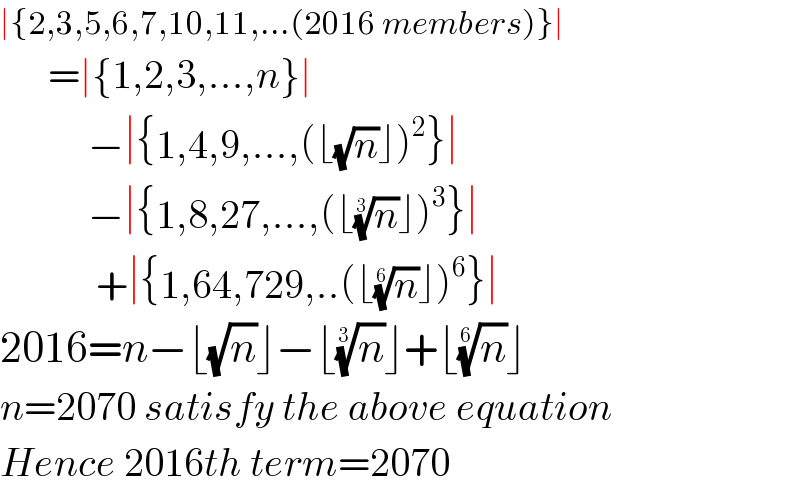
Question and Answers Forum
Question Number 111536 by Aina Samuel Temidayo last updated on 04/Sep/20

Commented by Rasheed.Sindhi last updated on 04/Sep/20

Commented by Aina Samuel Temidayo last updated on 04/Sep/20

Answered by Lordose last updated on 04/Sep/20

Commented by Aina Samuel Temidayo last updated on 04/Sep/20

Answered by Rasheed.Sindhi last updated on 06/Sep/20

Commented by Aina Samuel Temidayo last updated on 06/Sep/20

